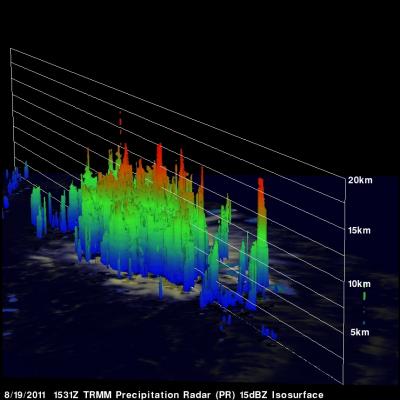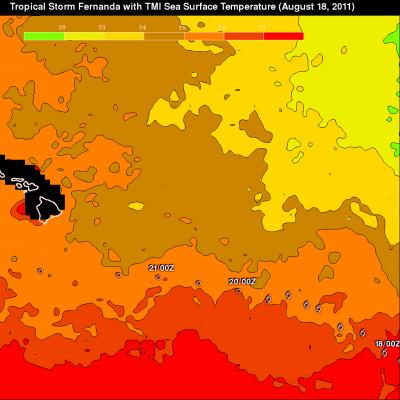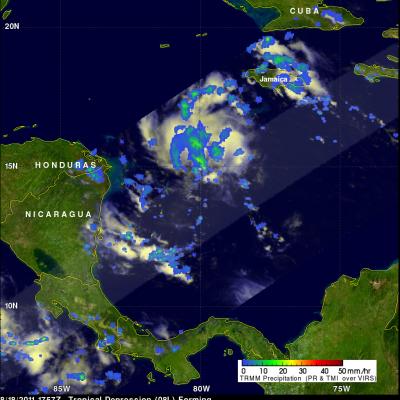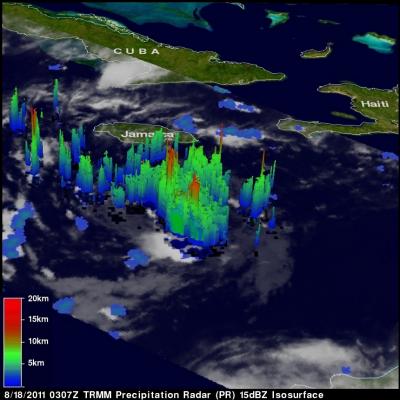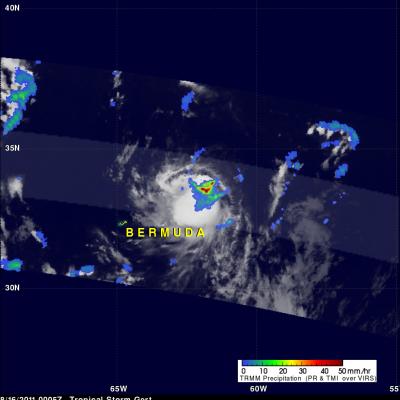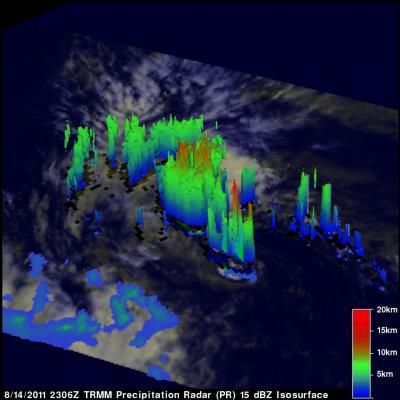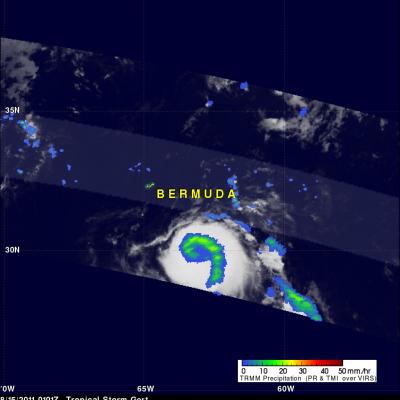Strong Tropical Storm Harvey Comes Ashore
The TRMM satellite had an excellant daylight view of tropical storm Harvey on 20 August 2011 at 1744 UTC ( 1:44 PM EDT) as the storm was coming ashore in Belize. An Air Force Reserve aircraft reported to the National Hurricane Center that Harvey's winds had increased to 63 kts (~72.5 mph) just before landfall. TRMM's Microwave Imager (TMI) and Precipitation Radar (PR) data show that heavy thunderstorms were occurring over land northwest of the storm's center.



